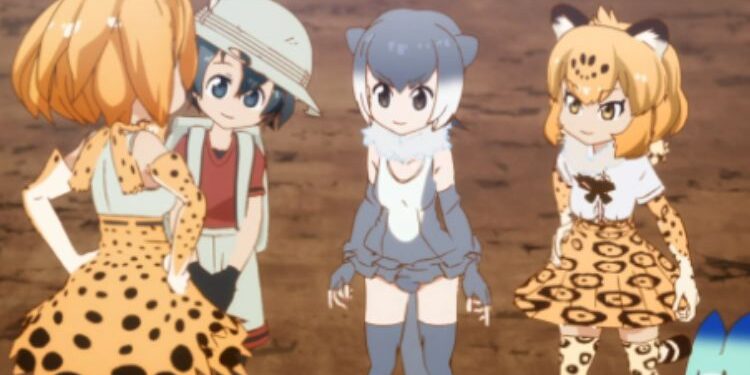Japanese pop culture lovers in addition to fashion designers, art lovers, and anime nerds, but what is kemono su αυτή; “Su” could be considered a stylized suffix, but the word essentially incorporates “kemono” which is Japanese for “beast” or “animal.” However, when combined, “Kemono Su” usually denotes a distinct type of theme or character style which mixes furry traits with over-the-top art and imagery.
This idea has developed into a niche of sorts over the years, particularly among those who appreciate alternative Japanese styles, character design, and the greater kemono art genre in the global art and fashion scene.
What Are The origins of Kemono in Japanese culture?
To understand kemono su, you need to understand the term “kemono” as it relates to Japanese culture. Lit. “Kemono” often refers to beasts or wild animals in general. In folklore, kemono often acquire spiritual or supernatural characteristics, perfectly embodied by fox spirits (kitsune) or shape-shifting raccoon dogs (tanuki).
The term “kemono” in modern pop culture refers to human-Like figures with animal features—like ears, tails, fur, or snouts. Well, these characters can be found in anime, manga, games, and even live performances, showcasing a whole array of different personalities, from adorable and fluttering to wacky and monstrous.
Kemono Su: Fashion & Artistic Movement
Kemono Su has evolved beyond the realm of mere character design — and is now a fashion and art movement in the modern world. Popular amongst artists and designers, the kemono style is used to create characters that not only embody animalistic features but also very humanistic traits. The fashion side merges brightly colored, exaggerated clothing with animal features to create a surreal but strikingly emotional visual language.
This phenomenon is particularly salient in doujin (or independent artist) circles, where creators are encouraged to imagine designs that push back against prevailing aesthetic sensibilities. Characters often wear loud patterns, accessories resembling claws, fangs or feathered capes and bright makeup or face paint, reinforcing their nature of hybrids.
Kemono Su, though uniquely Japanese, is very similar to the international furry fandom. The furry fandom, which is centered around anthropomorphic animals, has adopted the kemono style as a distinct, yet beautifal, take on their interests.
Kemono Su is still tied to its land, and is still an authentic Japanese visual story. Japanese kemono styling balances emotionally driven character designs, fine linework, and a unique stylization of anatomy that departs from the body proportions and phisique within the Western furry art style. These differences ensure Kemono Su to have wide popularity in the cosplay, illustration, and the world of character modeling.
Kemono Su: A Brief Guide to Popular Characters and Series
A number of popular anime, manga and games have adopted the kemono aesthetic, popularizing it internationally. Anthropomorphic characters with complex personalities and real-world issues can be found in series such as Beastars, Aggretsuko, and Kemono Friends. These series still surface-level design but dig deeper into broader topics such as identity, society, and emotion.
Coming from the 10th and 11th destinations that artists inspired by Kemono Su tend to be a native OC, meaning they are quite original, they do often with a backstory and a visual theme that speaks through the inner world of the artists. Web portals such as Pixiv and DeviantArt host thousands of such characters, many of whom build devoted followings among fans.
Stay Tuned for More Adventures from Kemono Su!
Technology has been fundamental to the growth of the Kemono Su movement. Digital art tools enable artists to add a great deal of detail and texture to their character designs. For those looking to create kemono-based works, many programs such as Clip Studio Paint, Photoshop, and 3D modeling programs allow animators and artists to put ideas to life in both 2D and 3D spaces.
In addition, social media platforms like Twitter, Instagram, and Youtube have allowed artists to build an audience on a global scale. VTubers to blend the traits of animals with the human-like behavior of a performer in a digital performance format (Kemono avatars).
Cosplay and Kemono Su: Immersing into Characters
A notable category for Kemono Su is also Cosplay. Afur suit, tails, animal ears, fantastical armor Enthusists make elaborate costumes These cosplayers frequently act at anime conventions, compete in competitions and post their designs on social media.
Japanese kemono-style fursuits in particular are famous for their craftsmanship, with intricate expressions, fluffy textures, and realistic fur patterns. As such, they often contrast heavily with Western fursuits, having large anime-style eyes and a more stylized appearance, giving them an instantly recognizable charm.
Future of Kemono Su
Kemono Su is gaining more traction as a genre and aesthetic, further trends being propelled by artists expanding their creative vision every day. As technology and global connectivity continue to evolve, we can expect the style to extend to areas such as virtual reality, AI-generated art, and interactive storytelling.
Creators will continue to explore new ways to mix elements of fantasy, emotion, and visual art, paving the road for even more kemono-based games, animation projects, and digital avatars.
The Bottom Lines
But Kemono Su is not just a blend of animal traits and human form—it’s a rich art form that unite people from all different cultures and allow for new forms of self-exercise. Kemono Su represents the intersection of creativity, identity, and fantasy from digital art and cosplay to storytelling and fashion.


